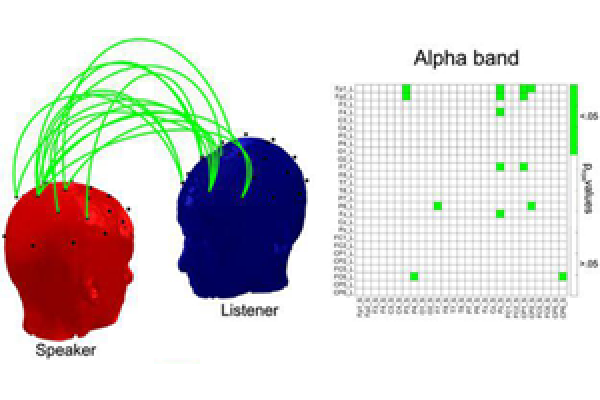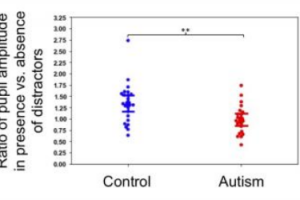EEG hyper scanning
Social communication skills are considered vital for humans. Due to developed social skills such as language, they are capable of establishing highly organized society.
What is Hyperscanning?
Social communication skills are considered vital for humans. Due to developed social skills such as language, they are capable of establishing highly organized society. Neural correlates of social communication usually are investigated through studies of brain lesions, patients with communication disorders and moreover with combination of psychological experiments and neuroimaging techniques on healthy subjects engaged in social interactions. One of the limitations of conventional studies is that they are mainly concentrated on aspects of offline social cognition, while most of human’s social behavior are described by online mutual interactions and forms a two-in-one system. The two-in-one system in social communications is a complex nonlinear system that cannot be simplified by the summation of effects in single distinct brains. So it seems reasonable to measure the two brain activity at the same time during the social interactions.
The term “hyperscanning” refers to concurrent brain activity recording from two or more subjects. Some “hyperscanning” studies have only assessed single brains activity during the social interaction. Social communications are appeared when two individuals are reacting to each other or interacting together, and this communication consists a nonlinear complexity due to inter-subject correlation of neural activation and behavior. Therefore, in order to characterize the social interaction the most efficient method is to utilize hyperscanning neuroimaging data to calculate inter-brain effects such as correlative (functional connectivity) and casual (efficient connectivity) relationships across areas in the two brains.
EEG Hyperscanning
EEG is the most common neuroimaging technique in hyperscanning studies. EEG hyperscanning is a way to record electroencephalography simultaneously from two or more individuals and analyze the resulting data to clarify the mutual changes in neural activation due to social and behavioral interactions.
In compare to fMRI, the greatest advantage of EEG, is its high temporal resolution. This good temporal resolution in millisecond scale might be helpful to estimate casual relationships between brain activations obtained from two subjects. Furthermore, it provides the opportunity to assess the frequency dependency in inter-brain neural synchronization and investigate instantaneous inter-brain synchronization. The other advantage of EEG is that the social activities which subjects can be engaged are not limited due to recording device. This feature enables the researcher to study the inter-brain neural synchronization in a more natural situation.
The big disadvantage of EEG is its limited ability to locate epicenter of brain activity. EEG measures the electrical potentials generated by the neural currents near the surface of scalp and its spatial resolution is approximately in range of 1-2 centimeters due to inhomogeneous conductivity profile of the head. Although nowadays estimation of brain activity sources is more possible with high-density EEG recording and mathematical methods, but source estimation still remains an ill-posed problem and EEG cannot be used to localize the deep brain sources including those engaged in social communication. So EEG is not suitable to determine spatial pattern of inter-brain networks involved in social interactions.
EEG Hyperscanning Setup in NBML
The synchrony between EEG amplifiers in EEG hyperscanning studies is a problem. To figure this out in a forward approach an external trigger can be sent to the EEG amplifiers to synchronize the recorded data in respect to this time marker. There is a point about this approach that each EEG amplifier uses a distinct sampling clock for data recording and subsequently time of trigger detection can be different among the amplifiers in the range of one sample time. This difference can be decreased through increasing the sampling rate. Another approach is to feed the data into a same unit. Another challenge about EEG hyperscanning is the different sensitivity of various amplifiers that can be solved with calibration of all EEG amplifiers through sending a signal with fixed amplitude to all of them. Although the latter problem is not a concern with EEG amplifiers which provides the recorded activity in scale of microvolt.
Multiple EEG amplifiers that are available in the EEG laboratory of NBML provides the opportunity to do EEG hyperscanning studies and we invite all of the researcher in this field to use the lab service.





Related Posts